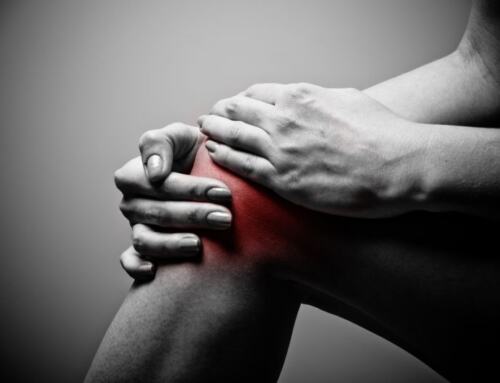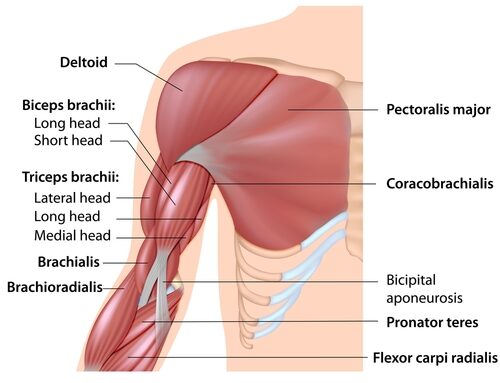Stiff Neck?
Levator Scapulae Muscle
In the relentless rush of modern life, where stress and tension seemingly lurk around every corner, the body often bears the brunt of our bustling routines. Among the most common and frustrating afflictions that arise from this relentless pace is the dreaded stiff neck, a sensation that can turn even the simplest head movement into a wincing ordeal. At the heart of this discomfort often lies the tightness of the levator scapula muscle – a silent troublemaker that can leave us physically immobilized and mentally drained. In this article, we delve deep into the intricate web of factors that tighten this vital muscle, from prolonged hours hunched over screens to the ceaseless weight of stress. But fear not, for we also unveil a repertoire of strategies to ease the tension and restore the neck’s grace and mobility. So, sit back, relax, and allow us to guide you through the twists and turns of the levator scapula’s tight grip, as we unravel the path to relief and rejuvenation.
Embarking on a quest for relief from a stubbornly stiff neck? Does the simple act of glancing over your shoulder or engaging in a conversation involve a discomforting dance of contortions? If so, brace yourself – for the culprit might just be the often overlooked trigger points nestled within your levator scapulae. In the intricate ensemble of muscles at play, the levator scapulae, joined by the steadfast supraspinatus and infraspinatus, emerges as the chief architect of shoulder agony, outpacing even the most notorious contenders in the pain arena.
What is the function of the Levator Scapulae?
Nestled within the intricate musculoskeletal framework of the upper back and neck, the levator scapulae muscle emerges as a pivotal anatomical entity. Its fundamental role resides in effecting the elevation and rotation of the scapula, an essential osseous component of the shoulder girdle. This orchestration of movement is especially pronounced during arm elevation, as the levator scapulae’s engagement facilitates scapular elevation, a prelude to the arm’s upward trajectory. Additionally, the muscle’s subtle yet essential contribution extends to the realm of neck rotation, wherein its controlled contraction allows for the graceful and coordinated turning of the head. The levator scapulae, therefore, assumes a poised position as an inconspicuous yet indispensable facilitator of the seamless interplay between shoulder and neck dynamics, embodying an embodiment of biomechanical finesse.
The Actions of the Levator Scapulae
The levator scapulae muscle is called into action during a variety of everyday movements that involve the shoulder and neck. Some of these movements include:
1. Shoulder Shrug: The most obvious movement is the shoulder shrug, where you lift your shoulders towards your ears. This action heavily engages the levator scapulae.
2. Carrying a Bag: When you carry a bag or purse over your shoulder, the levator scapulae helps to stabilize and support the weight, preventing the shoulder from drooping.
3. Looking Over Your Shoulder: When you turn your head to look over your shoulder, the levator scapulae assists in this motion by rotating the neck and helping to maintain balance.
4. Raising Your Arm: Any activity that requires raising your arm, such as reaching for an object on a high shelf, activates the levator scapulae to elevate the scapula, allowing for the necessary clearance.
5. Driving: While driving, when you turn your head to check blind spots or look behind you, the levator scapulae contributes to the rotation of the neck.
6. Computer Use: If you spend long hours working at a computer, poor posture can cause tension in the levator scapulae. It tries to stabilize your head and neck when they are tilted forward. Also sitting in a chair with armrests that are too high will trigger this muscle.
7. Phone Use: Holding a phone between your ear and shoulder can cause the levator scapulae to contract as it assists in keeping the shoulder in position.
8. Talking: Turning your head to talk to someone at your side will activate the levator scapulae
9. Swimming: Swimming freestyle activates the levator scapulae when the head is turned from side to side.
10. Sleeping: Sleeping with the neck in a tilted position will affect the levator scapulae.
These are just a few examples of how the levator scapulae is called into action in our daily activities. Its role extends to various movements that involve the coordination between the shoulder and neck, facilitating our mobility and functionality.
An additional manner in which this muscle might experience tightness arises from potential muscular issues or imbalances that disrupt the natural gait. Notably, the shoulders play an instinctive role in aiding walking movements, resulting in potential strain on the levator scapulae. Moreover, the muscle’s susceptibility increases notably when one is battling an infection during periods of illness.
How to Fix Your Stiff Neck
Navigating around potential issues concerning the levator scapulae involves a few prudent strategies. Firstly, consider adjusting your conversation stance by directly facing the person you’re engaging with, transcending the mere rotation of the head. Ensuring your eyewear prescription aligns with your visual needs while reading can also play a substantial role in mitigating strain. Opting for a speaker phone or Bluetooth device rather than wedging the phone against your ear with your shoulder is another wise course of action.
Stretching this muscle is helpful, especially under a warm shower. Gently guide your nose towards the opposing armpit while introducing subtle pressure using your hand can yield considerable comfort.
Of course, you have the option of scheduling a massage with us. A single session often proves sufficient to alleviate the discomfort associated with the levator scapulae, potentially negating the need for an additional visit for physical therapy. Consider paying us a visit prior to making any such appointments – the results might pleasantly surprise you! Schedule now!
Other Articles To Read
Get rid of burning between your shoulder blades







